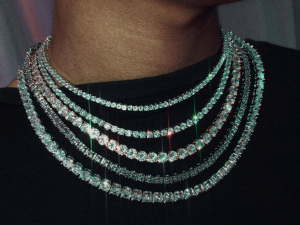The way by which Muslim apparel for ladies is really decided out of fundamental modesty and an aching to not draw solitary thought by any stretch of the imagination. Muslims generally don’t hate the imprisonments put on their modest dresses by their religion and most view it as a satisfied decree of their certainty.
Islam provides guidance essentially all pieces of life, including matters of open decency.
Islam has two hotspots for heading and choices: the Quran, which is seen as the revealed articulation of Allah, and the Hadith—the shows of the Prophet Muhammad, who fills in as a human genuine model and guide.
It should be noticed that codes for lead concerning dressing like modest maxi dresses are unobtrusive dresses for ladies fundamentally relaxed up when individuals are home and with their families. The goings with essentials is trailed by Muslims when they appear without trying to hide, not in the security of their own homes.
A chador is an external piece of clothing worn by ladies in certain pieces of the Middle East, especially Iran and Iraq. It is a semi-circle, floor-length covering that swings from the highest point of the head, streaming over the apparel underneath so as to conceal the shape or bend of a lady’s body. In Farsi, the word chador truly signifies “tent.”
In contrast to the abaya (normal in some other Middle Eastern nations), the chador does not more often than not have sleeves and does not shut in the front. Or maybe it remains open, or the lady herself holds it shut by hand, under her arm, or even with her teeth. The chador is regularly dark and is at times worn with a scarf underneath which covers the hair. Underneath the chador, ladies have normally worn long skirts and shirts, or long dresses.
Early Versions
The soonest forms of the chador were not dark, but instead lightweight, light-shaded, and printed. Numerous ladies still wear this style around the home for petitions, family social affairs, and neighborhood trips. The dark chadors customarily did not have embellishments, for example, catches or weaving, yet some later forms have fused these innovative components.
The prevalence of the chador has shifted throughout the years. Since it is generally exceptional to Iran, some believe it to be a customary, national dress. It goes back to at any rate the seventh century C.E. furthermore, is most regular among Shi’a Muslims. During the standard of the Shah in the mid twentieth century, the chador and all head covers were restricted. Through the following decades, it was not prohibited but rather debilitated among the informed first class. With the unrest in 1979, the full covering was reestablished, and numerous ladies were forced to wear a dark chador specifically. These principles were loose after some time, taking into account various hues and styles, however a chador is as yet required in specific schools and places of work.
Current Iran
In Iran today, it is required for ladies to be secured with an external piece of clothing and head covering, however the chador itself isn’t compulsory. In any case, it is still unequivocally empowered by church, and frequently ladies will wear it for religious reasons or as an issue of national pride. Others may feel constrained by family or network individuals to wear it so as to seem “decent.” For more youthful ladies and in urban regions, the chador is progressively disapproved of, for an external article of clothing that is increasingly similar to a 3/4-length coat with jeans, called a “manteau.”
Otherwise called
“Chador” is a Persian word; in certain nations, a comparable article of clothing is known as an abaya or burka. See the glossary of Islamic attire for terms identifying with different things of Islamic garments in different nations.


